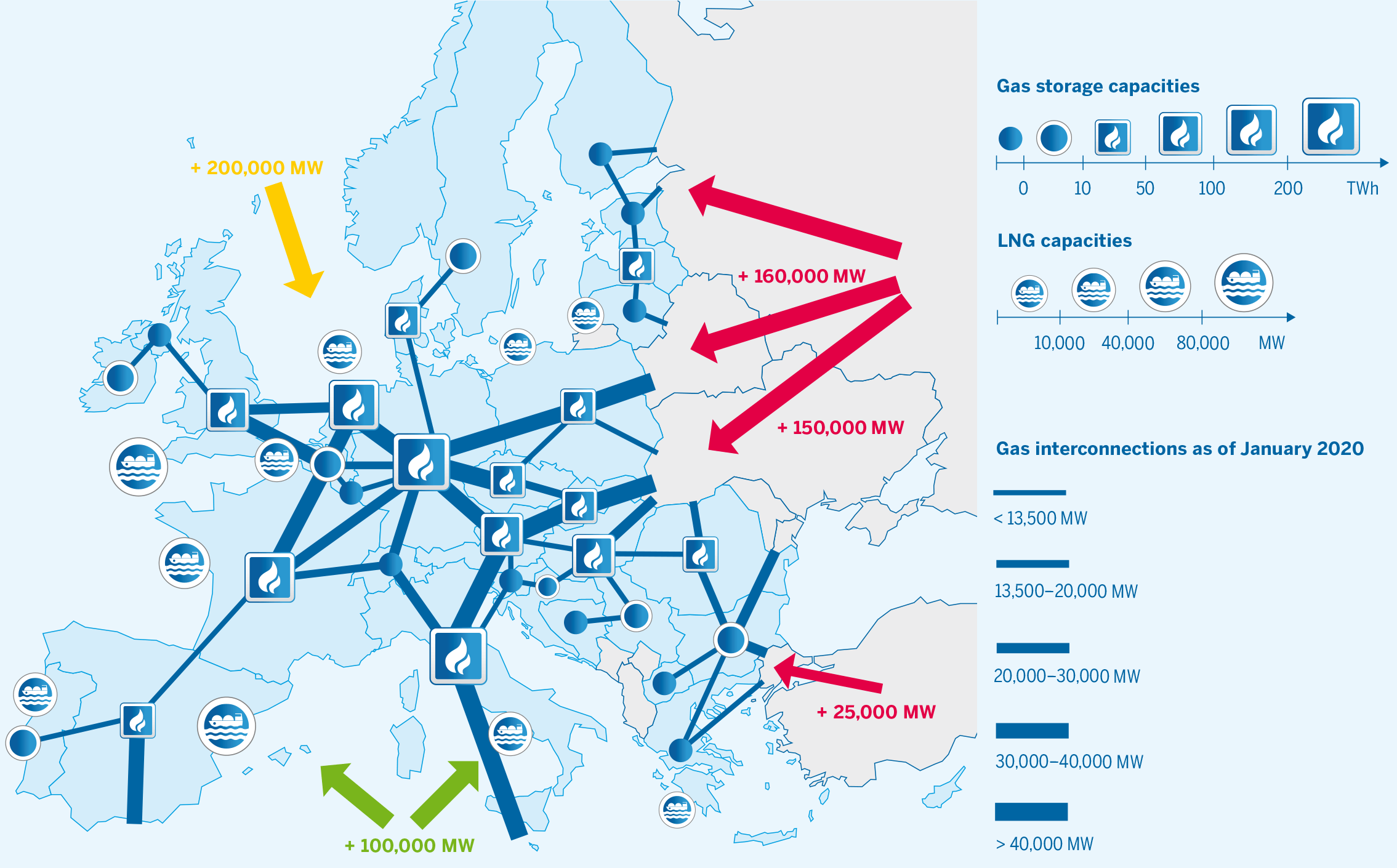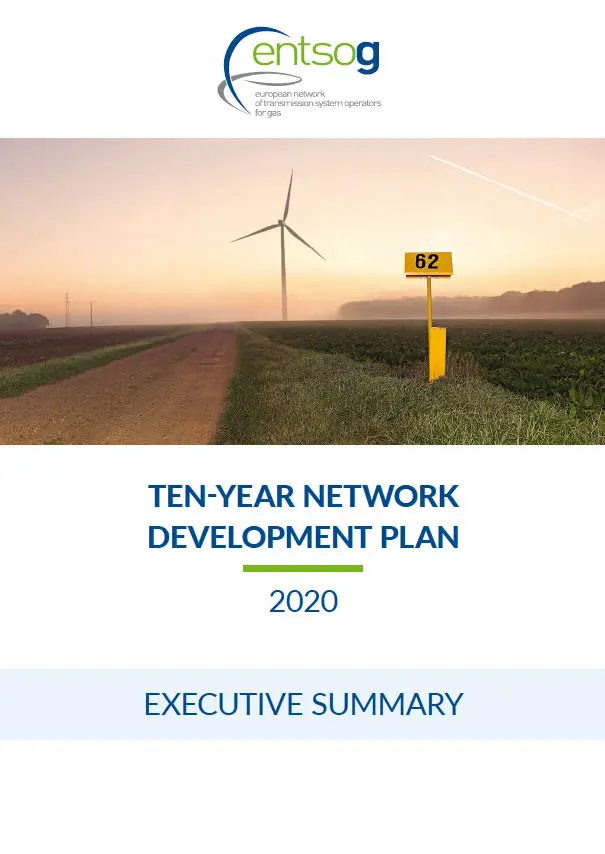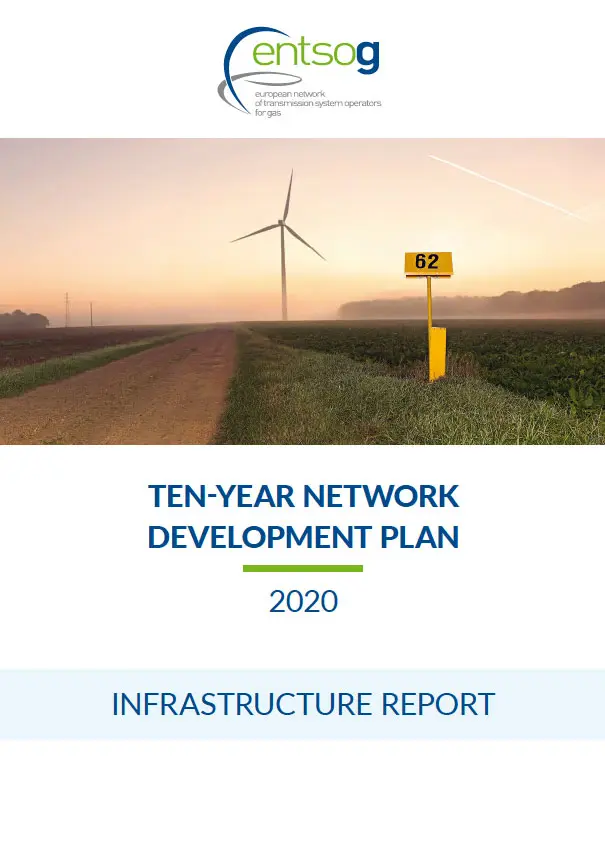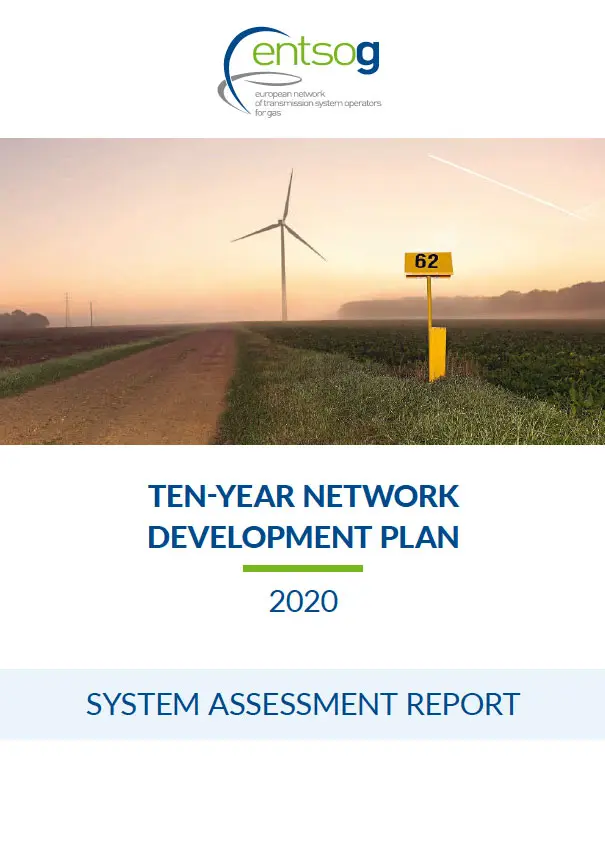I am proud to preface this sixth edition of the Union-wide Ten-Year Network Development Plan for gas. This TYNDP 2020 aims to support the EU climate and energy ambitions, including the Green Deal and the EU strategies for Hydrogen and Energy System Integration. I truly believe that the final Ten-Year Network Development Plan 2020 delivers real added-value to a wide range of stakeholder and decision-makers.
This TYNDP process has been delivered to you in a changing and important context for the role of gas in the European energy sector. The tasks for the infrastructure operators include as major focus areas not only security of supply and market integration but also the sustainability agenda.
The European gas infrastructure has seen decades of development and the existing international gas system already ensures a high level of market integration across most of Europe. The gas transmission infrastructure, LNG terminals and gas storages provide safe, reliable and affordable low carbon energy to European citizens. Furthermore, the gas infrastructure offers exceptional and cost-efficient opportunities for the EU to develop intermittent renewables and decarbonised gases on a large scale, to meet EU climate and energy goals.
TYNDP 2020 concludes that almost all gas infrastructure gaps can be addressed in the next five years by projects already initiated, including supply route disruptions. These investments will be mostly commissioned before 2025 and will bring affordable, diversified and competitive supplies of gas, increasingly decarbonised over time. However, it should be noted that in specific areas, further development of the infrastructure is still required. It is particularly important for those areas in the context of evolving Member States decisions on their energy mix and to embrace the decarbonisation agenda.
ENTSOG has undertaken significant changes to further improve the TYNDP, to meet stakeholders’ feedback and to better interlink it with the electricity system. ENTSOG has worked on holistic scenarios, considering the full European energy system, built in cooperation with ENTSO-E to represent differentiated paths towards achieving the EU decarbonisation targets. For the first time in TYNDP 2020, ENTSOG has developed COP21 compliant scenarios, building on a carbon budget approach to reach Net-Zero 2050. Additionally, a national policy scenario, National Trends, was built to reflect the respective Member States’ National Energy and Climate Plans (NECPs).
The Hybrid Energy Infrastructure, building on both electricity and gas systems as the cross-border energy carriers, will enable delivery of more efficient, resilient, sustainable, and cheaper decarbonisation of the European energy sector. The joint effort of ENTSOG and stakeholders contributing to this TYNDP, shows the aim of the European energy players to work closely together to meet EU climate goals.
ENTSOG, jointly with ENTSO-E, has developed this TYNDP 2020 building on the expertise and cooperation of more than 90 TSO experts from all over Europe. To ensure full transparency in the process, ENTSOG and ENTSO-E have jointly organised a series of public workshops and consultations during the 18-month process of the TYNDP scenario elaboration, with the participation of more than 100 stakeholders/associations, the feedback from which has been considered in the development of the TYNDP. The results of this intensive stakeholder engagement include the first ever full energy scenarios at European and national level. As with the TYNDP, the data sets and underlying assumptions for the modelling of these scenarios have been made publicly available to ensure that all results are understandable and replicable.
ENTSOG has initiated its works to internalise Green Deal priorities, including the EC Hydrogen and ESI Strategies, the revision of the TEN-E regulation and the upcoming Hydrogen and Gas Markets Decarbonisation Package. For the next TYNDP 2022, ENTSOG plans to organise even more stakeholder involvement in the planning process (including detailed cooperation with DSOs, hydrogen producers and consumers, RES-E producers, NGOs, and others). To streamline stakeholders’ cooperation even more and as proposed to EC and to all participants of April 2021 Copenhagen Infrastructure Forum, ENTSOG has suggested to establish a Joint Stakeholder Forum for Scenarios (together with ENTSO-E) to facilitate neutrality and improve transparency.
We see the transparency and cooperation between gas, hydrogen and electricity value chains as crucial, specifically in the context of a future European Hydrogen Backbone. ENTSOG is ready to facilitate the coordinated development of a hydrogen backbone via ENTSOG’s TYNDP process, ensuring speed and scale in hydrogen grid development and thereby the decarbonisation of the gas grids. ENTSOG finds that this should start now and that it will contribute to the delivery of the EU Recovery Plan objectives.
On behalf of ENTSOG, I would like to thank all parties involved in the TYNDP 2020 process. The feedback received through our consultation process, together with the ACER Opinion, recognised the efforts made by ENTSOG to further increase the transparency and the accessibility of the TYNDP data and assessment results, and encourages us to continue developing a more sustainable-oriented TYNDP 2022 edition. This final edition of TYNDP 2020 has been adapted accordingly to the feedback and recommendations received, and a specific “feedback section” has been included. The longer-term recommendations of ACER constitute an important element to help ENTSOG set the objectives of TYNDP 2022. The TYNDP 2022 Scenario report process has already started and will be open for stakeholder consultation soon.
Looking forward to TYNDP 2022!
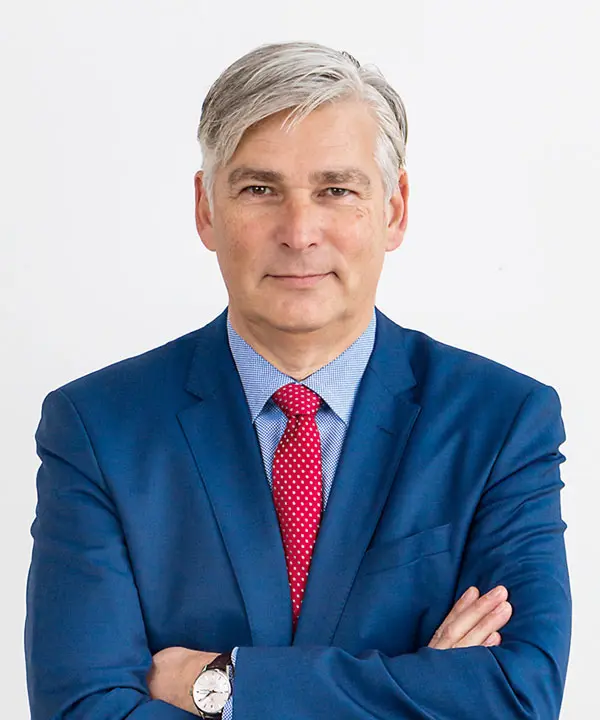

Jan Ingwersen
ENTSOG General Director
This TYNDP process has been delivered to you in a changing and important context for the role of gas in the European energy sector. The tasks for the infrastructure operators include as major focus areas not only security of supply and market integration but also the sustainability agenda.
The European gas infrastructure has seen decades of development and the existing international gas system already ensures a high level of market integration across most of Europe. The gas transmission infrastructure, LNG terminals and gas storages provide safe, reliable and affordable low carbon energy to European citizens. Furthermore, the gas infrastructure offers exceptional and cost-efficient opportunities for the EU to develop intermittent renewables and decarbonised gases on a large scale, to meet EU climate and energy goals.
TYNDP 2020 concludes that almost all gas infrastructure gaps can be addressed in the next five years by projects already initiated, including supply route disruptions. These investments will be mostly commissioned before 2025 and will bring affordable, diversified and competitive supplies of gas, increasingly decarbonised over time. However, it should be noted that in specific areas, further development of the infrastructure is still required. It is particularly important for those areas in the context of evolving Member States decisions on their energy mix and to embrace the decarbonisation agenda.
ENTSOG has undertaken significant changes to further improve the TYNDP, to meet stakeholders’ feedback and to better interlink it with the electricity system. ENTSOG has worked on holistic scenarios, considering the full European energy system, built in cooperation with ENTSO-E to represent differentiated paths towards achieving the EU decarbonisation targets. For the first time in TYNDP 2020, ENTSOG has developed COP21 compliant scenarios, building on a carbon budget approach to reach Net-Zero 2050. Additionally, a national policy scenario, National Trends, was built to reflect the respective Member States’ National Energy and Climate Plans (NECPs).
The Hybrid Energy Infrastructure, building on both electricity and gas systems as the cross-border energy carriers, will enable delivery of more efficient, resilient, sustainable, and cheaper decarbonisation of the European energy sector. The joint effort of ENTSOG and stakeholders contributing to this TYNDP, shows the aim of the European energy players to work closely together to meet EU climate goals.
ENTSOG, jointly with ENTSO-E, has developed this TYNDP 2020 building on the expertise and cooperation of more than 90 TSO experts from all over Europe. To ensure full transparency in the process, ENTSOG and ENTSO-E have jointly organised a series of public workshops and consultations during the 18-month process of the TYNDP scenario elaboration, with the participation of more than 100 stakeholders/associations, the feedback from which has been considered in the development of the TYNDP. The results of this intensive stakeholder engagement include the first ever full energy scenarios at European and national level. As with the TYNDP, the data sets and underlying assumptions for the modelling of these scenarios have been made publicly available to ensure that all results are understandable and replicable.
ENTSOG has initiated its works to internalise Green Deal priorities, including the EC Hydrogen and ESI Strategies, the revision of the TEN-E regulation and the upcoming Hydrogen and Gas Markets Decarbonisation Package. For the next TYNDP 2022, ENTSOG plans to organise even more stakeholder involvement in the planning process (including detailed cooperation with DSOs, hydrogen producers and consumers, RES-E producers, NGOs, and others). To streamline stakeholders’ cooperation even more and as proposed to EC and to all participants of April 2021 Copenhagen Infrastructure Forum, ENTSOG has suggested to establish a Joint Stakeholder Forum for Scenarios (together with ENTSO-E) to facilitate neutrality and improve transparency.
We see the transparency and cooperation between gas, hydrogen and electricity value chains as crucial, specifically in the context of a future European Hydrogen Backbone. ENTSOG is ready to facilitate the coordinated development of a hydrogen backbone via ENTSOG’s TYNDP process, ensuring speed and scale in hydrogen grid development and thereby the decarbonisation of the gas grids. ENTSOG finds that this should start now and that it will contribute to the delivery of the EU Recovery Plan objectives.
On behalf of ENTSOG, I would like to thank all parties involved in the TYNDP 2020 process. The feedback received through our consultation process, together with the ACER Opinion, recognised the efforts made by ENTSOG to further increase the transparency and the accessibility of the TYNDP data and assessment results, and encourages us to continue developing a more sustainable-oriented TYNDP 2022 edition. This final edition of TYNDP 2020 has been adapted accordingly to the feedback and recommendations received, and a specific “feedback section” has been included. The longer-term recommendations of ACER constitute an important element to help ENTSOG set the objectives of TYNDP 2022. The TYNDP 2022 Scenario report process has already started and will be open for stakeholder consultation soon.
Looking forward to TYNDP 2022!
TYNDP 2020
The European gas infrastructure has seen decades of investment and development. The gas system connects most of European countries, ensuring the most efficient solution for transporting and storing large amounts of energy over long periods and distances.
The current gas infrastructure has achieved the internal energy market in most parts of Europe
TYNDP 2020 confirms the strong resilience of the gas infrastructure in terms of Security of Supply and its ability to enable efficient competition and market integration, provided there is no market distortion. However, some specific areas still show investement needs and the projects addressing these needs have either made their final investment decision (FID) or they have reached an advanced stage of development and are planned to be commissioned within the next 5 years.
The gas system is in transition towards net-zero 2050
The current gas infrastructure can already support the phase out of carbon intensive fuels in carbon intensive sectors such as industry and transport sectors, but also in the power sector. However, more investments in renewables, decarbonisation and infrastructure conversion are needed. Energy Transition (ETR) projects demonstrate their ability to decarbonise the energy system and next editions of the TYNDP will continue to assess them.
TYNDP 2020 confirms the interdependence of the electricity and gas sectors and the benefits of quick-wins to decarbonise the European energy system
In a net-zero future, hydrogen and biomethane play a key role in the decarbonisation. Indeed, the gas system needs clean hydrogen from intermittent renewable sources, like wind and solar, to decarbonise; and the electricity system needs decarbonised gas to support and secure the significant development of the electricity demand in any of the scenarios.
Furthermore, ready-to-implement solutions with no (or limited) investment like coal to gas switch in the power sector could already save more than 85 MtCO₂ year, and will reduce the need for further investment in decarbonisation post 2050.
The European gas system is one of the key players in achieving the European energy and climate targets. The gas infrastructure offers unique opportunities – in energy storage, transmission and integration of renewables – to support the decarbonisation of the overall energy system in a cost effective, secure and achievable way.
Figure 1: EU gas system 2020 at a sight


